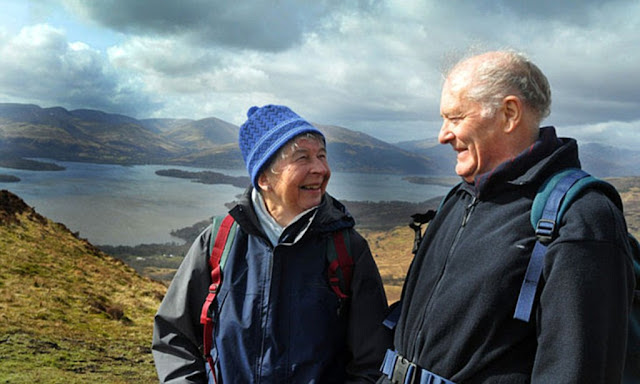“Fresh air and muddy boots make everything better.”
A healthy body is a happy one and one of the best ways to keep oneself healthy is to exercise daily. People often misinterpret the exercise and think exercise involves a long, painful and boring workout. A good workout can be one-hour hike through a local park. It is the best to have a hike three or four times a week which can have both short and long term benefits like controlling obesity to prevent heart diseases and comforting you after a pack of tiring and monotonous hour’s routine. Hiking not only tones your muscles but also controls hypertension and diabetes. Read to know the benefits of hiking.
1. Losing excess pounds
Hiking is an excellent way to lose excess pounds and improve health. The percentage of obesity in adults and even in children is increasing day by day. But creating a safe sidewalk or hiking can help in losing pounds of weight. According to a report “Walking for Health”, while hiking a comfortable 2 miles per hour, a person weighing 150 pounds will burn 240 calories in one hour.
Any diet or weight loss scheme cannot produce such pleasurable results.
2. Preventing heart disease
Hiking can decrease cholesterol level which is a common cause of heart diseases. More particularly, it increases high-density lipoprotein (HDL) which is considered to be the good cholesterol, which helps move bad cholesterol from the artery walls. An estimated 17.5 million people died from heart diseases in 2012, representing 31% of all global deaths. As the heart diseases are caused by more than just inactivity, the odds of avoiding this leading cause of death can be greatly improved by maintaining a regular hiking routine.
3. Decreasing hypertension
The modern medication techniques can cure Hypertension, more commonly known as high blood pressure, but hiking is the most effective and inexpensive option. Research has shown that regular exercise such as walking and hiking lowers systolic and diastolic blood pressure by a mean of 10 mmHg. Walking also lowers plasma norepinephrine which correlates with blood pressure improvement.
A study was conducted in which 19 inactive men with mild hypertension were put through an aerobic exercise program consisting of hiking, walking, cycling and jogging etc. After 10 weeks, their blood pressure dropped dramatically.
4. Improving and maintaining mental health
Depression and stress are common medical problems in today’s world. But again hiking is the most inexpensive and effective way to feel better. Walking and hiking causes the release of calming brain chemicals called endorphins, which are natural tranquilizers. It also releases adrenaline, produced by the body to cope with real or perceived danger. If the adrenaline isn’t released from the body, it accumulates, causing muscle tension and feelings of anxiety.
5. Slowing the aging process
Aging doesn’t decrease the body’s ability to be physically active and healthy, but rather leading an inactive and unhealthy lifestyle accelerates the aging process.
An article in the April 2001 American Journal of Public Health identified the relationship between reduced mortality risk and moderate recreational activity. A study of two groups of 15 middle-aged men was conducted between 1969 and 1992, during which time one group exercised regularly, while the other group exercised for the first five years and then stopped. When researchers tested these men at the end of the 23 years, they found that the non-exercisers lost 41 percent of their aerobic power, while the exercisers lost only 13 percent.
6. Improving the quality of the air we breathe
The mode of transportation we choose every day affects the health of millions. Transportation causes nearly two-thirds of the carbon monoxide, a third of the nitrogen oxides, and a quarter of the hydrocarbons in our atmosphere. Air pollution contributes to lung disease, including asthma and lung cancer. Hiking can replace short-distance motor-vehicle trips, which are the least fuel-efficient and generate the most pollution per mile traveled. A family that walks two miles a day instead of driving will, in one year, prevent 730 pounds of carbon dioxide from entering the atmosphere which is a huge difference making for lungs.
7. Preventing and controlling diabetes
Diabetes, a common chronic metabolic disorder, changes the way a body breaks down and uses starches and sugars (glucose). Normally insulin, a hormone produced by the pancreas, helps store glucose in a form that later can be released for energy. In a diabetic, the pancreas either does not produce enough insulin or produces no insulin. Uncontrolled, diabetes can lead to blindness, kidney failure, heart disease, stroke, and nerve damage.
Regular exercise, including hiking, can help prevent diabetes and can protect the body from the degenerative effects of diabetes. For a person who has Type I (insulin-dependent) diabetes, walking can reduce the amount of insulin the person needs. A person with Type II (non-insulin dependent) diabetes can actually reverse the course of the diabetes through diet, exercise and weight loss.
8. Tones your muscles
Straight-up walking can get your muscles in better shape because hiking involves working your whole body especially the quads and hamstrings. And if you are holding a bundle of belongings, you are also going to challenge the strength and stamina of your upper body as well.









